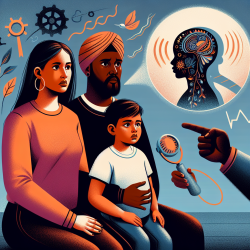Introduction
In the realm of sports, teenage athletes often find themselves navigating a complex environment where the benefits of physical activity can be overshadowed by the exposure to various forms of violence. The study "Profiles of Teenage Athletes’ Exposure to Violence in Sport: An Analysis of Their Sport Practice, Athletic Behaviors, and Mental Health" sheds light on the prevalence of violence in sports and its impact on young athletes. This blog post aims to provide practitioners with insights into how they can utilize these findings to enhance their interventions and support systems for teenage athletes.
Understanding the Profiles of Victimization
The research identifies three distinct profiles of victimization among teenage athletes:
- Non-victimized Profile: Comprising 37% of the sample, these athletes report no exposure to violence in sports.
- Psychological Victimization Profile: Representing 52% of the sample, these athletes experience psychological violence from teammates, coaches, and parents.
- Poly-victimized Profile: Making up 10% of the sample, these athletes are exposed to multiple forms of violence from various perpetrators.
These profiles highlight the varied experiences of athletes and underscore the need for tailored interventions that address the specific needs of each group.
Implications for Practitioners
For practitioners working with teenage athletes, understanding these profiles can inform the development of targeted interventions. Here are some strategies to consider:
- Enhanced Screening and Assessment: Implement comprehensive assessments to identify athletes at risk of victimization and tailor interventions accordingly.
- Targeted Mental Health Support: Provide psychological support and counseling for athletes exposed to violence, focusing on building resilience and coping strategies.
- Parental and Coach Education: Educate parents and coaches on recognizing signs of victimization and fostering a supportive environment for athletes.
- Creating Safe Spaces: Establish safe spaces within sports organizations where athletes can report incidents of violence without fear of retribution.
Encouraging Further Research
While this study provides valuable insights, there is a need for ongoing research to explore the nuances of violence exposure in sports. Practitioners are encouraged to engage in further research to better understand the long-term effects of victimization and develop more effective intervention strategies.
Conclusion
By leveraging the findings from this study, practitioners can play a crucial role in transforming the sports environment for teenage athletes. Through informed interventions and continued research, we can create safer and more supportive spaces that promote the mental and physical well-being of young athletes.
To read the original research paper, please follow this link: Profiles of Teenage Athletes’ Exposure to Violence in Sport: An Analysis of Their Sport Practice, Athletic Behaviors, and Mental Health.










